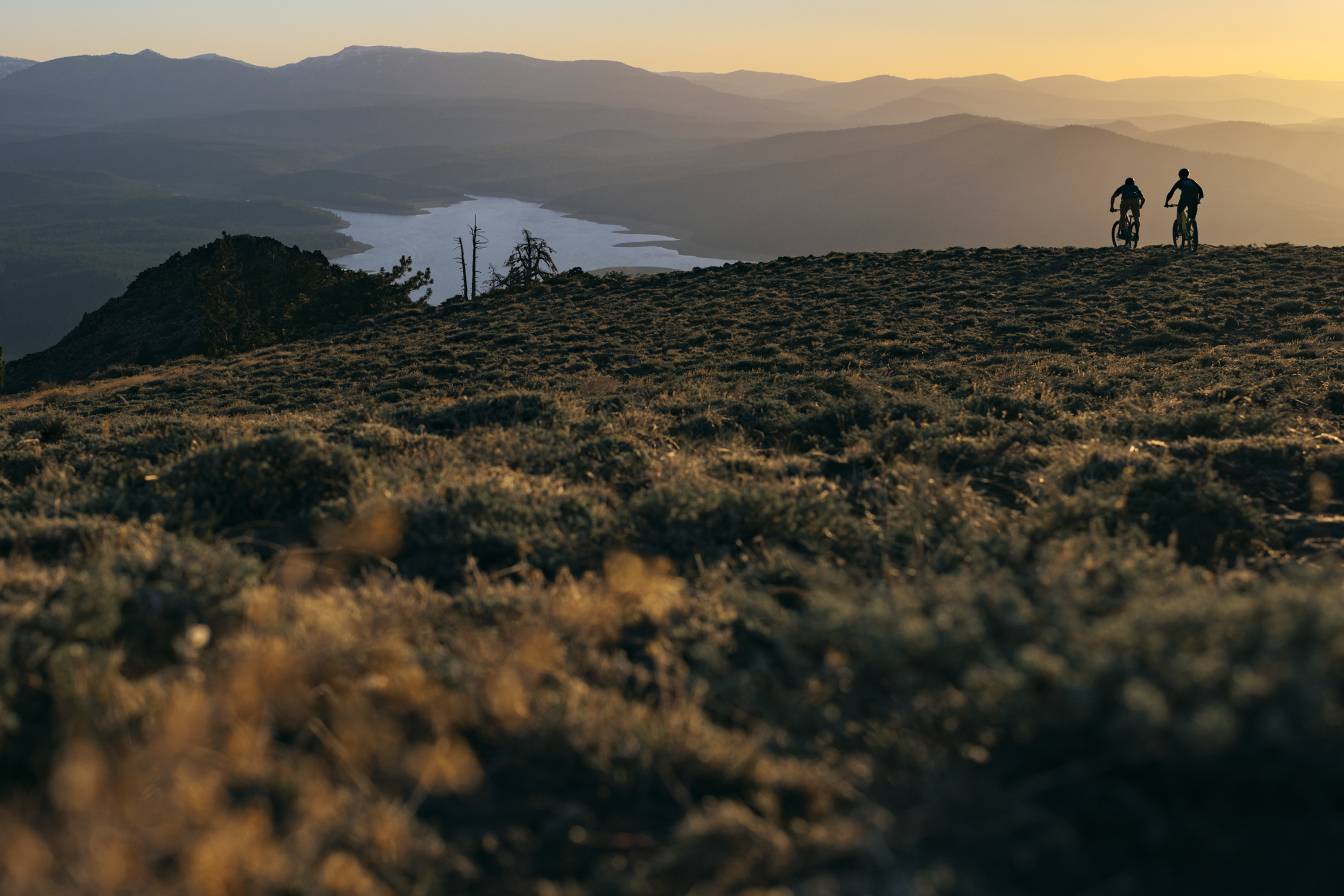From the very beginning, we built mountain bikes to take us further. To explore new trails. To discover new experiences. To push the boundaries of cycling, into unknown pedaling territory. Just as knobby tires, suspension and disc brakes took all of us deeper into the unknown, pedal assist e-MTBs have brought more of us along for the ride.
The following adventure is an excerpt from Further, Shimano’s finest collection of e-MTB tales from around the globe. These stories are told to inspire us to push our own boundaries of action, adventure and advocacy, just a little bit further with these powerful new rides.
Story by Kurt Gensheimer / Photos by Ken Etzel
John Groom stands beside his U.S. Forest Service-issue Santa Cruz Heckler e-MTB on an ornate stone pathway built through a rock scree field looking west to the Granite Chief Wilderness above Squaw Valley. The ribbon of flat, rideable rock, a football field long, is on the upper portion of Big Chief Trail, and it took months of work to complete. The impressive rock work is a central feature of Big Chief, an eight-mile, technical singletrack descent connecting Tahoe Rim Trail near Watson Lake with Sawtooth Trail near Truckee, California.
Truckee Trails Foundation in 2018–it is the first new trail built in the Truckee Ranger District in more than a decade–Big Chief is a nonmotorized trail recently legalized for Class 1 e-MTB use. It mixes rocky, technical challenges with fast, flowing bits of downhill and majestic views. Most importantly, Big Chief represents a paradigm shift in the leadership and land management style within the Truckee Ranger District, as well as representing everything Groom has achieved in his career with the Forest Service.
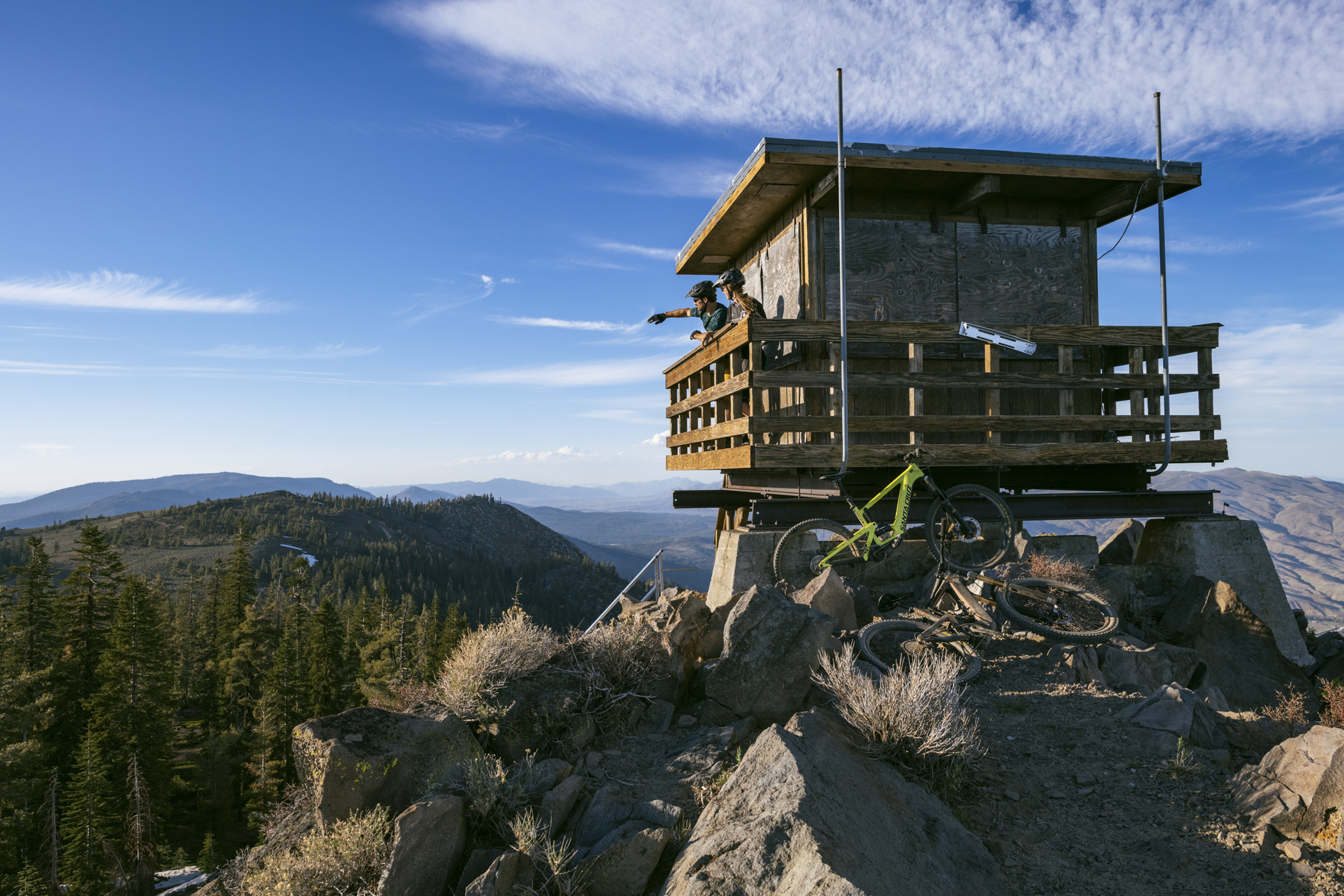
“We could have bypassed building through this rock field, as there’s great dirt just up the hill perfect for a trail,” said Groom, who is public service staff officer for the Tahoe National Forest-Truckee Ranger District. “But that would have been too easy, and you would miss this amazing view.”
The easy way has never been Groom’s style. He first worked for the Forest Service in the Gila National Forest of New Mexico 20 years ago, as a firefighter, horse packer and trail builder. As a recreational trails and wilderness manager, Groom worked on the open range. This younger version of himself thought his future would be an idyllic, storybook lifestyle in the remote wilds of the American West.
“But soon I realized all I was doing was breaking giant rocks in the high desert, far from anywhere or anyone,” Groom recognized.


His ambition, beyond breaking rocks, led him to McCall, Idaho. There, his skiing certifications and his degree in adventure education qualified him to run the local office of the National Avalanche Center. In the summer, he managed the trails of the Payette National Forest, known by dirt bikers as some of the best moto-legal singletrack in North America. Not only did Groom work the trails as a federal employee, but he also rode them frequently on his dirt bike as a trail user.
Groom is a rare breed who knows how to ride horses, dirt bikes, mountain bikes and Class 1 e-MTBs, while also spending weeks at a time tromping through the woods on foot.
This wide range of trail experience, both as a land manager and as a trail user, sets him apart from most other Forest Service officers. He is an outdoorsman as much if not more than he is a federal employee tasked.
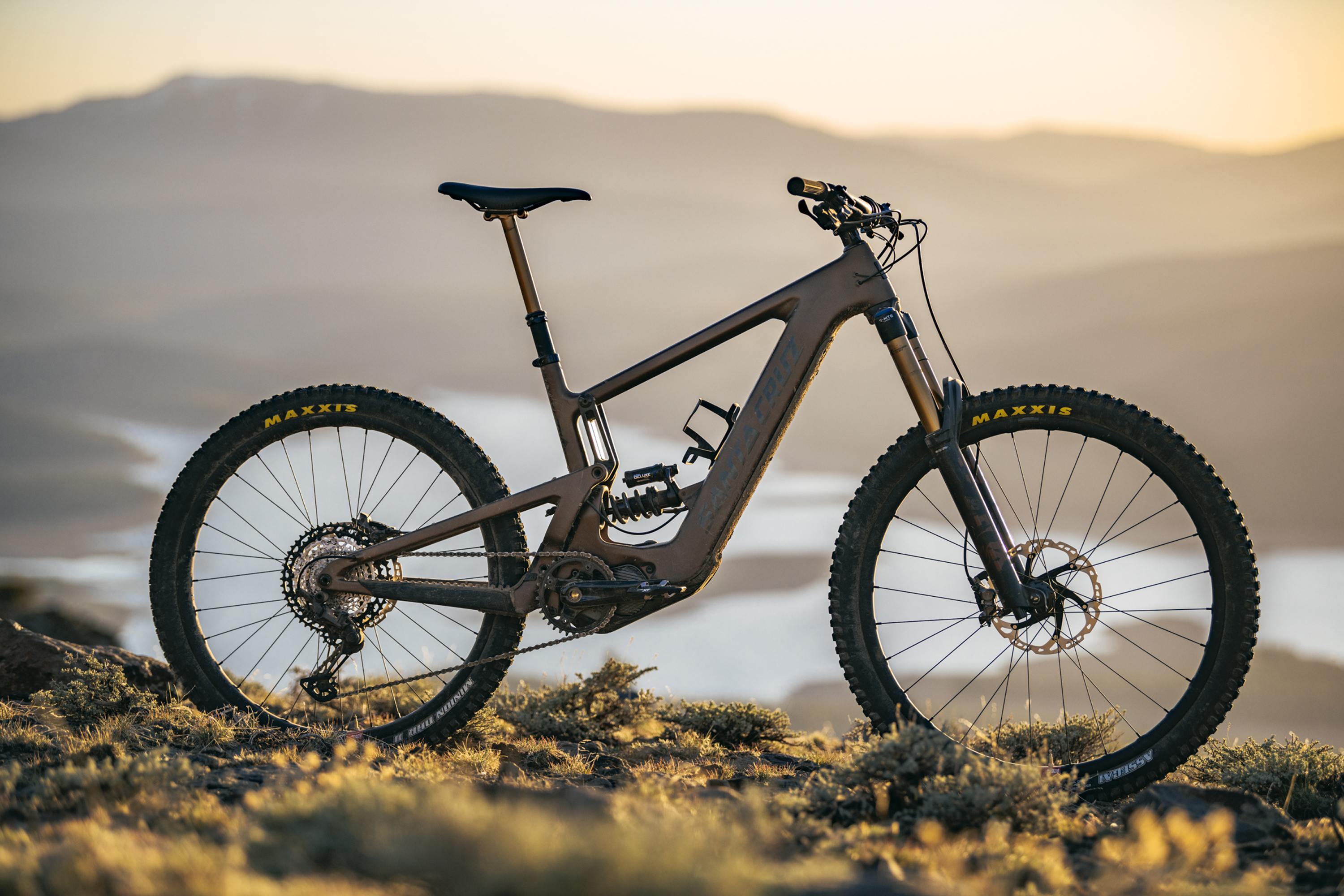
Though he prefers being in the woods full-time, Groom’s current role as a public service staff officer has inevitably led to more office work. The tendency to take on more tasks than available time has Groom’s calendar boiling over. He’s constantly on the phone, even in the middle of the woods riding his bike.
Beyond overseeing all trails planning and development in the Truckee Ranger District, Groom also deploys and operates heavy machinery, handles campgrounds and coordinates with fire management. In the winter, he operates the howitzer artillery guns used for avalanche controls on Alpine Meadows Road. He also represents Forest Service responsibilities with the Sierra Avalanche Center. While he does a lot, Groom is quick to credit his top-notch staff across the agency.
“I basically just approve time sheets, because their work is always outstanding,” Groom said. “Our avalanche center forecasters have some of the best social science in avalanche studies in the country, if not the world.”
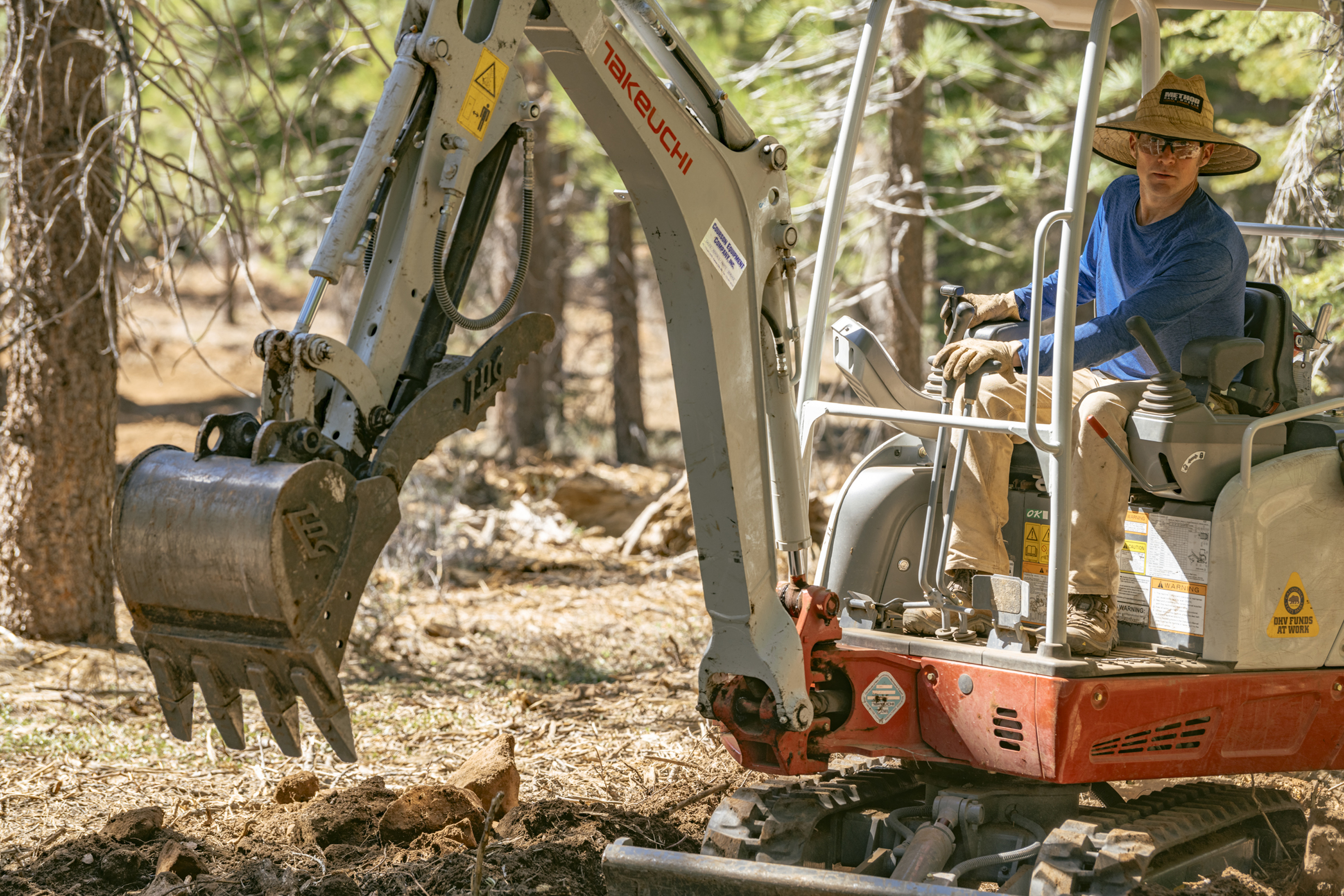
But of all the responsibilities on Groom’s desk, he identifies the most important as being a liaison between the federal government and the public.
“As a public service staff officer, my first job is to serve the public,” Groom explained. “And the best way I can do that is to be out in the woods as much as possible, understanding how the public interacts with the land, then coming up with solutions that meet the desires of the public within the limits of our agency.”
In other words, Groom is among a new, younger generation of Forest Service officers with a vested interest in new trail construction. In an agency tasked with huge responsibilities, from fire management to watershed restoration, recreation within the Forest Service has historically sat on the back burner. However, Groom prioritizes recreation, saying “yes” to public desires for more trails, and he works to provide more recreational opportunities.
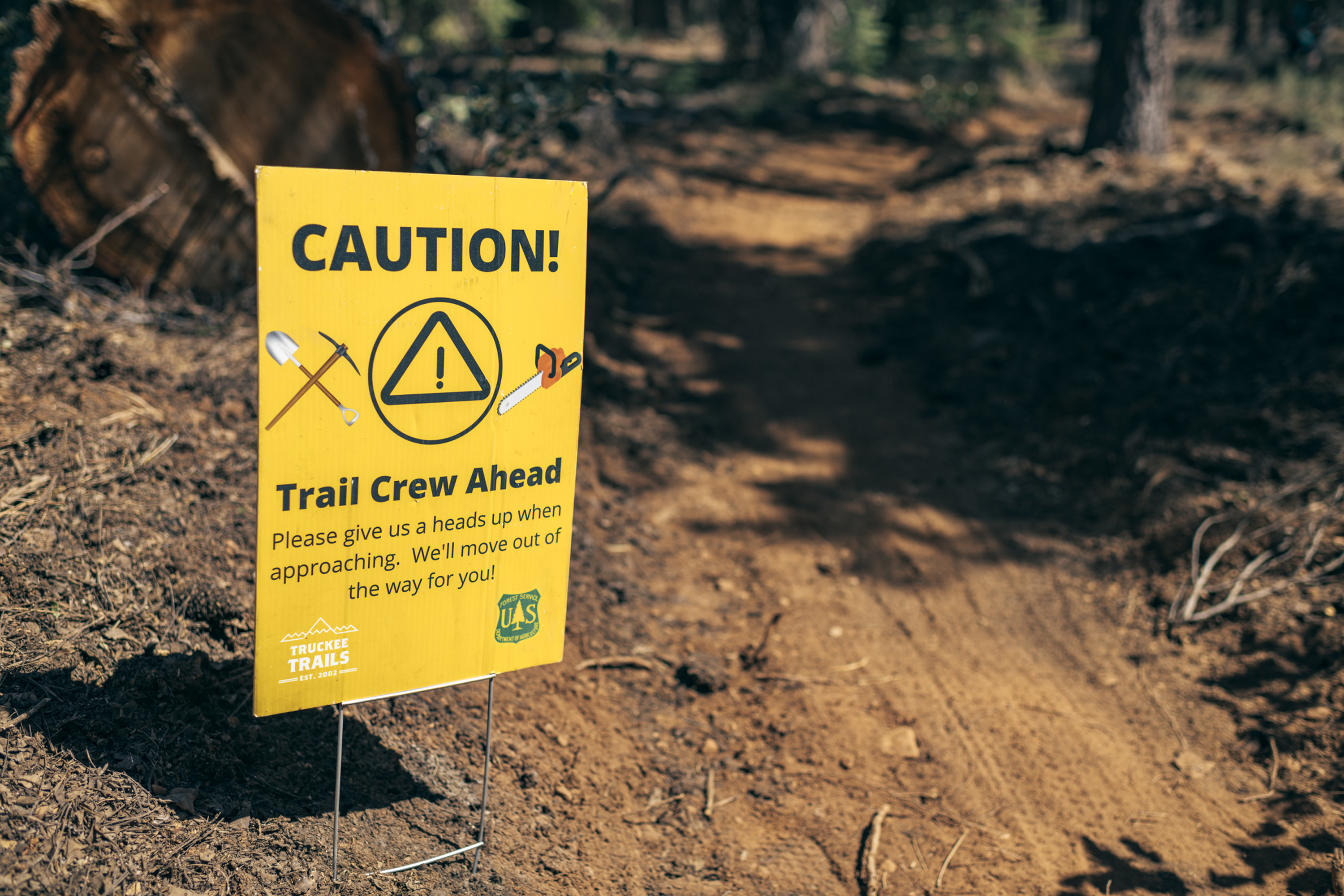
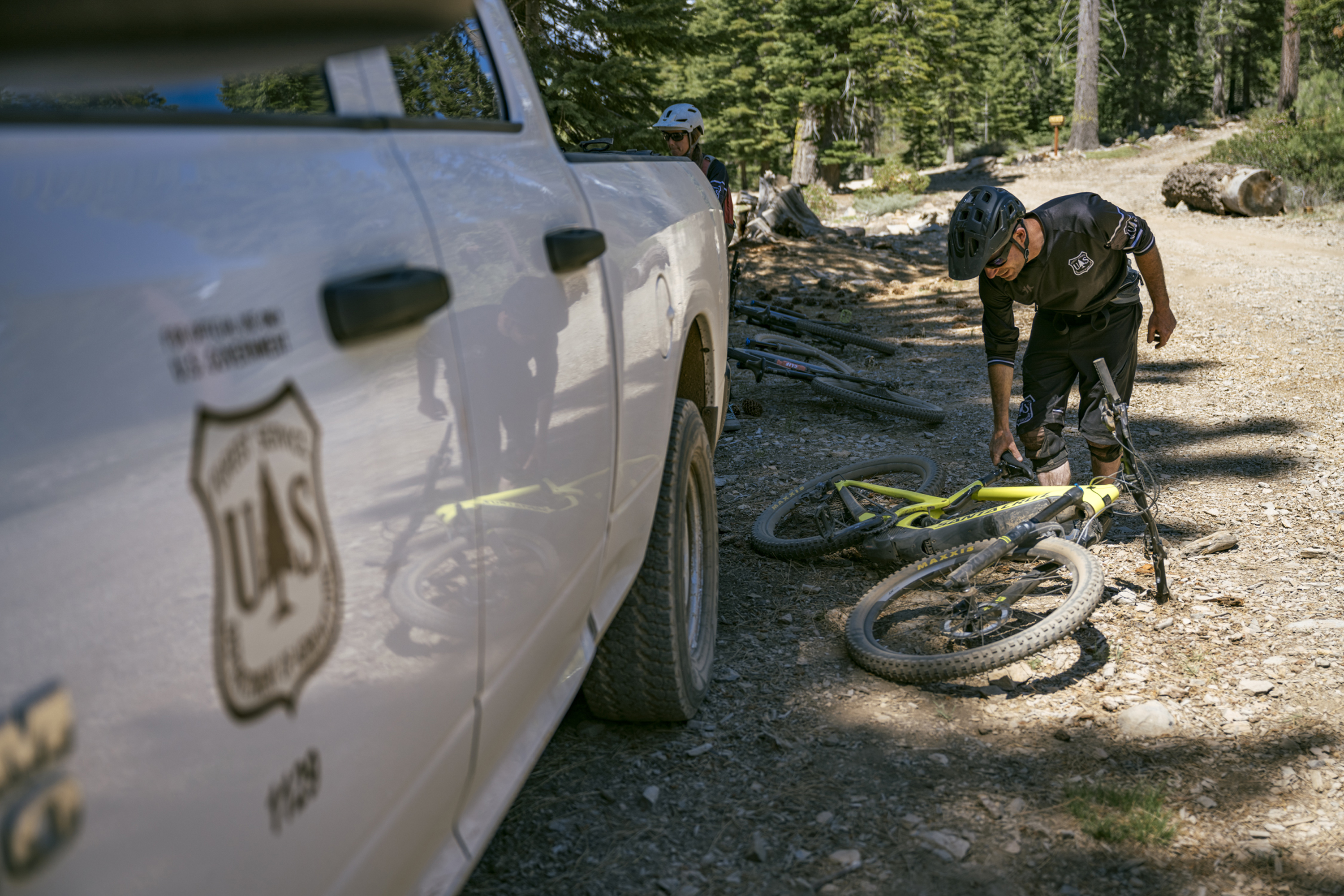
“Our agency has been known to ignore problems when it comes to land management,” Groom pointed out. “But ignoring the problem only makes it a bigger problem that becomes unmanageable. Our district realizes that addressing the problems and working with the public for more trail opportunities makes matters better for everyone.”
Groom’s generation values recreation and quality trail experiences, as do his wife and two young boys. He’s also invested in the recreation economy, owning Flow Bikes, a youth mountain bike brand. He believes the only way he can fulfill his legal responsibility to the public is to be out on the land, interacting with the users and understanding what kind of new trails they want.
But even a guy as focused, organized and motivated as Groom can’t do it alone. Katie Mansfield first came onto the Tahoe National Forest in 2015, working in campgrounds, when she met Groom. She worked seasonally for the Forest Service for four years before becoming a full-time employee.
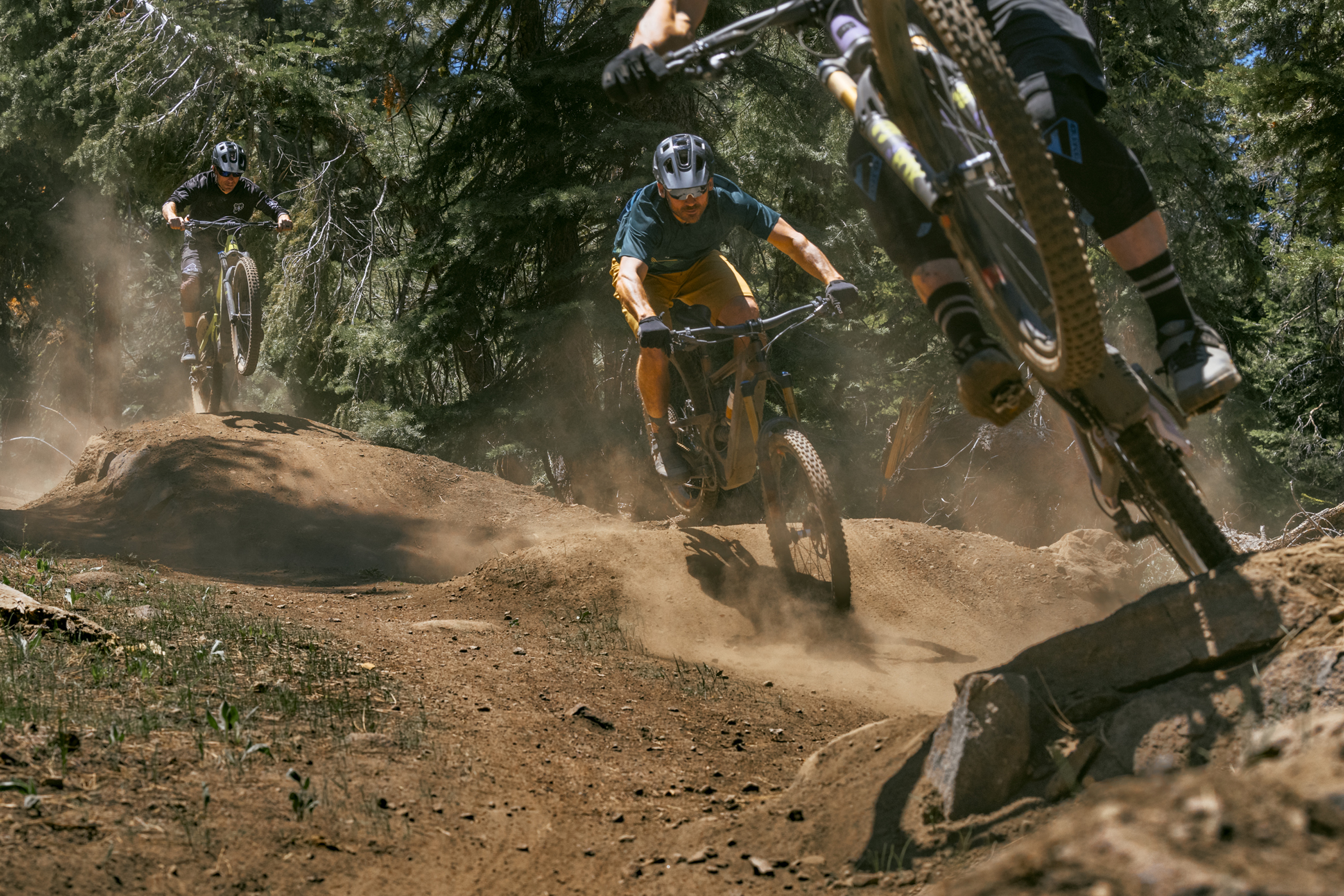
“I grew up as a kid in the woods, and all I wanted to do as an adult was to be in the woods,” said Mansfield, trails and wilderness program manager for the Truckee Ranger District.
Mansfield’s love for the outdoors left an impression on Groom when they worked in campgrounds together. Then in 2019, Groom was hiring for Mansfield’s current job and saw her name come across his desk. He knew her background in GIS mapping software, as well as her dedication to the outdoors and capacity to learn, so he brought her on board. They have been inseparable ever since, planning and flagging new trails
“John has a lot of vision for the future of Truckee,” Mansfield said. “He’s constantly dreaming up the next big project. A lot of my job is shaping that vision into realistic projects that we can fund and build.
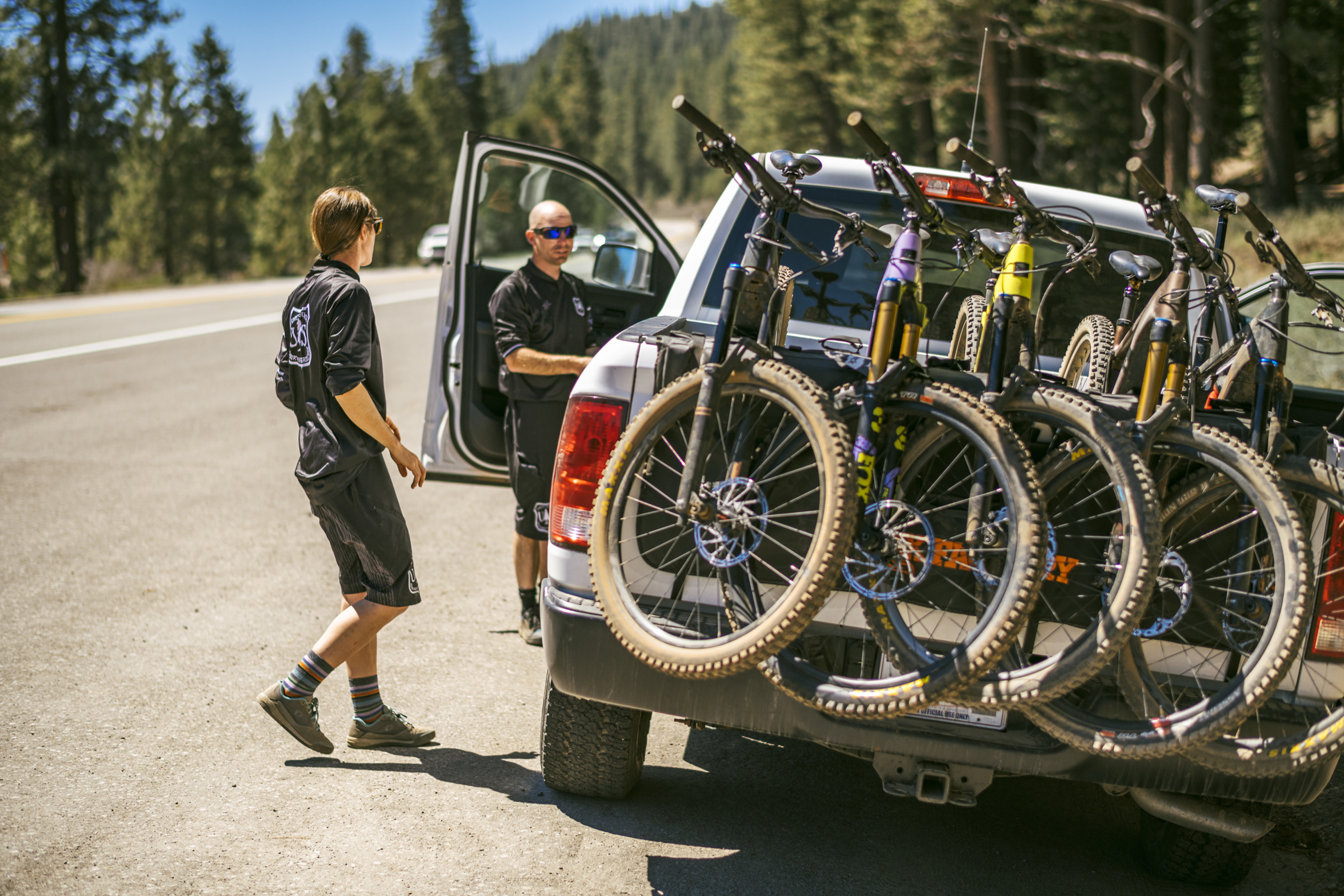
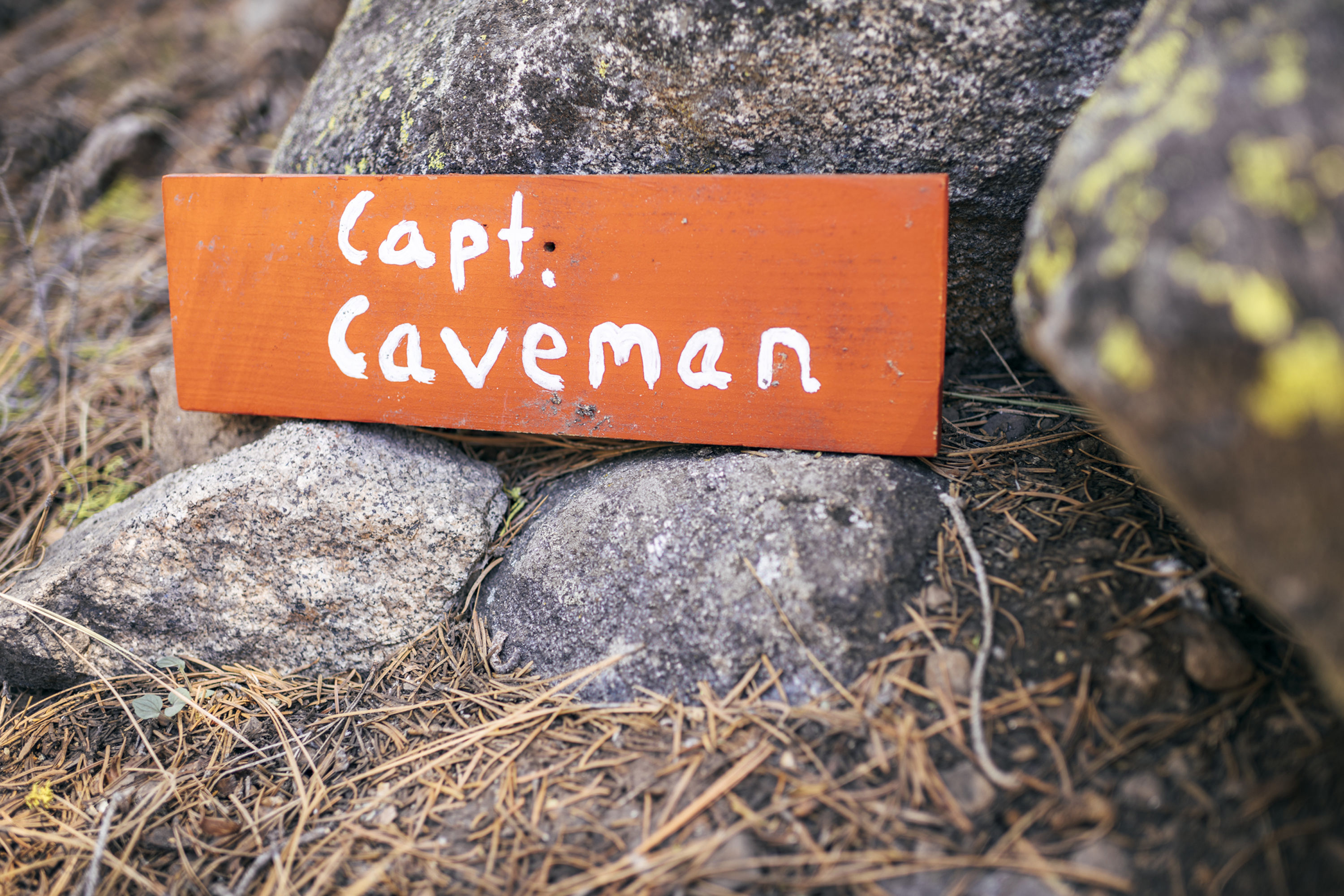
The East Zone Connectivity Project is Groom’s latest trail vision. The recently inked proposal would bring 71 miles of new motorized and non-motorized singletrack to the Boca, Stampede and Prosser Reservoir area east of Truckee, in the shadow of Verdi Peak at 8,444 feet elevation. The East Zone trails will eventually link into the 300-mile Connected Communities trail plan of the Sierra Buttes Trail Stewardship in Sierra and Plumas County, as well as a new network of moto legal trails the Reno Area Dirt Riders are planning from Peavine Peak in Reno westward through Dog Valley and over to Stampede Reservoir.
In addition to new trails, Groom plans to develop new facilities near Boca Reservoir including bathrooms, trailheads with family friendly day use areas, bicycle and motorcycle skills areas, and loops fit for all trail users from beginner to expert. There’s even a plan to resurrect the abandoned fire tower lookout on Verdi Peak, making it a rentable hut with commanding views of Reno, Truckee, Mount Rose and the Sierra Crest.
“After managing the moto trails in Idaho, I wanted to bring a little bit of that backcountry moto trail feel to Truckee,” Groom explained. “The East Zone project will also take some of the pressure off the trailheads closer to town and help spread people out more.”
The public comment period of the East Zone project garnered close to 100 comments, and only two of those were objections, an incredibly successful outcome that Groom credits to his off-highway vehicle (OHV) manager, John Brokaw.
“John wrote the entire environmental assessment for the East Zone, and because of his background as a biologist, his writing was informed and scientific,” Groom said.
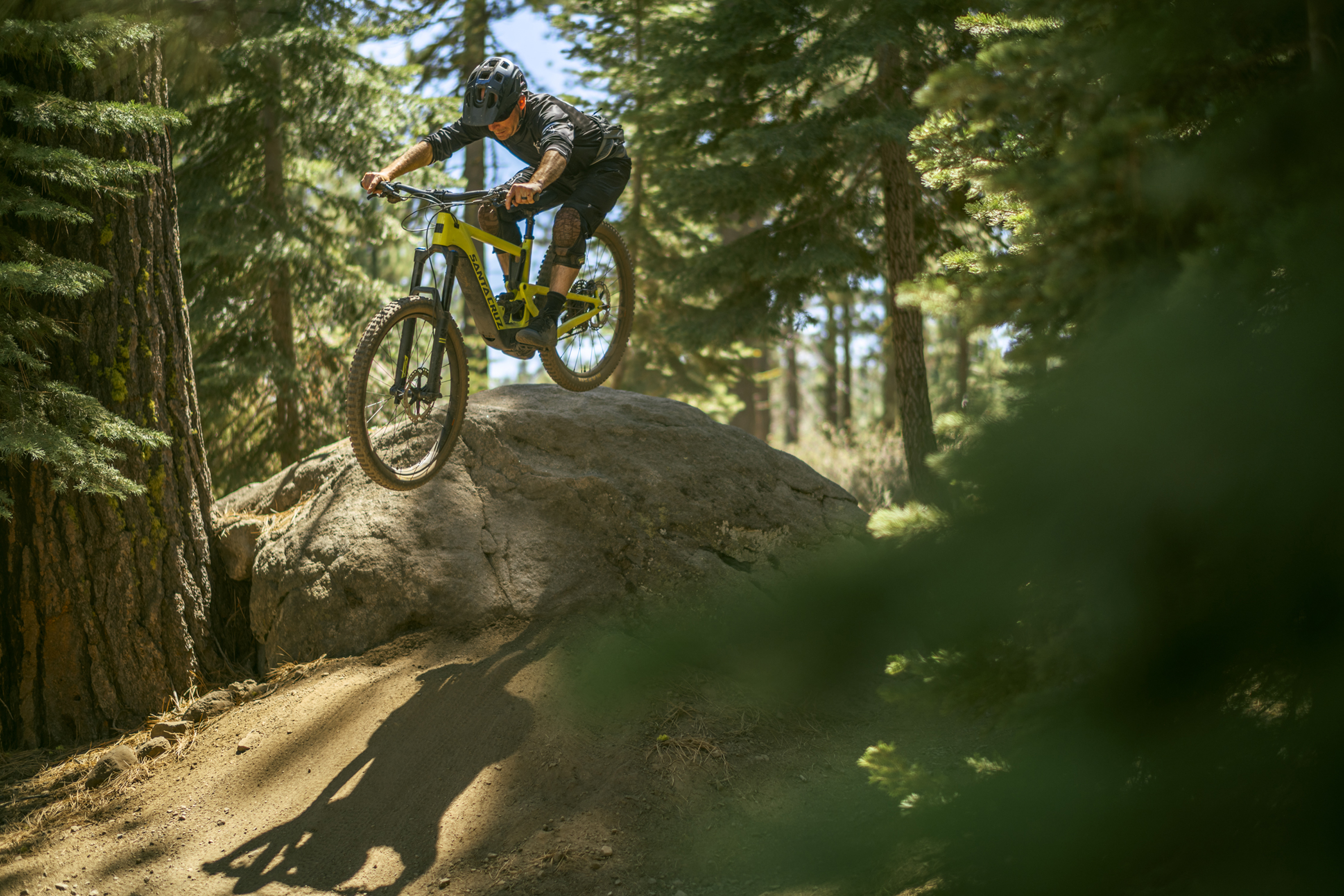
Tahoe National Forest made another significant change by taking back operations of its campgrounds from concessionaires. For years, third party, private entities ran and profited from operating National Forest campgrounds, extracting revenue that could instead be put back into building and maintaining trails. The East Zone project plans to use these proceeds retained by eliminating concessionaires for trail and infrastructure projects.
The East Zone project is also noteworthy because it opens 40 miles of existing nonmotorized singletrack to Class 1 e-MTBs, trails including Big Chief, Sawtooth, Happy Face, Jackass Ridge and Emigrant Trail running from Stampede Reservoir up Alder Creek to Tahoe Donner. There’s also 15 miles of new Class 1 e-bike-legal trail in the works.
The legalization of Class 1 e-bikes is significant in The Tahoe National Forest, as it is a historically conservative agency that’s now taking a progressive approach to this new form of recreation. Instead of turning their heads and pretending the public isn’t riding e-bikes on non-motorized trails, the Tahoe National Forest decided to actually study Class 1 e-bike access.
Each year for the past four years, regional non-profit trails organizations like the Sierra Buttes Trail Stewardship have held e-bike demonstration events. These annual events have given land managers–from rookie officers with the Tahoe National Forest all the way up to-MTBs the district ranger, Jonathan Cook-Fisher, and forest supervisor, Eli Ilano–the chance to swing their legs over e-MTBs and experience the ride first hand.

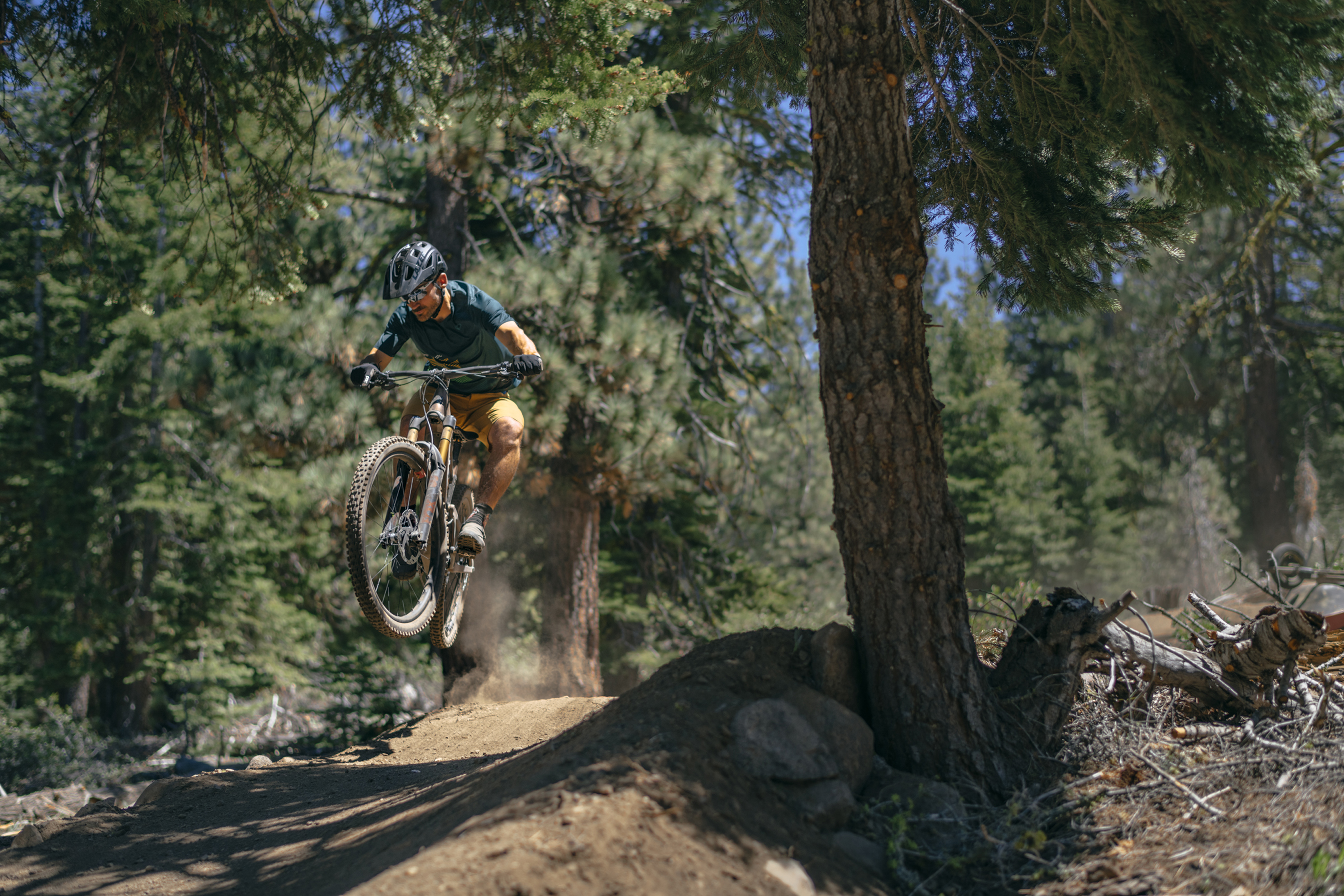
After hundreds of miles and several seasons on e-MTBs, the Tahoe National Forest concluded Class 1 e-bikes had no more environmental or social impact on trails than traditional mountain bikes, and in some situations e-MTBs had less impact than traditional mountain bikes. These findings led the Truckee Ranger District to expand legal Class 1 e-bike access.
“Katie and I spend a lot of time hiking and riding in the woods,” Groom said. “We see the landscape and potential problems, and collect data, so we are making land management decisions based on facts not opinions or biases. Thankfully, we have the full support of Eli and Jonathan in our recommendations, which is why we’re expanding Class 1 e-bike access.”
This expansion of e-MTB access has not come without challenges. Although expanded Class 1 e-bike access has been well-received in the community, a few equestrian groups from outside the community have threatened to sue, citing biases and unsubstantiated facts about social and environmental impact. But because Groom is a multifaceted trail user familiar with both bikes and horses, he can speak the language of every trail user group. “When I engage with the public, some trail users represent biases or opinions that can’t be backed up with fact,” Groom said. “For example, when an equestrian tells me that a certain trail should be closed to bikes, I can cite facts based on social impact studies we conducted as to why it shouldn’t be closed to bikes.”
As the old saying goes, timing is everything. Groom mentioned that right now the Tahoe National Forest has a dream team in place, which is why he’s working so hard to get as many miles of new trail approved as possible.
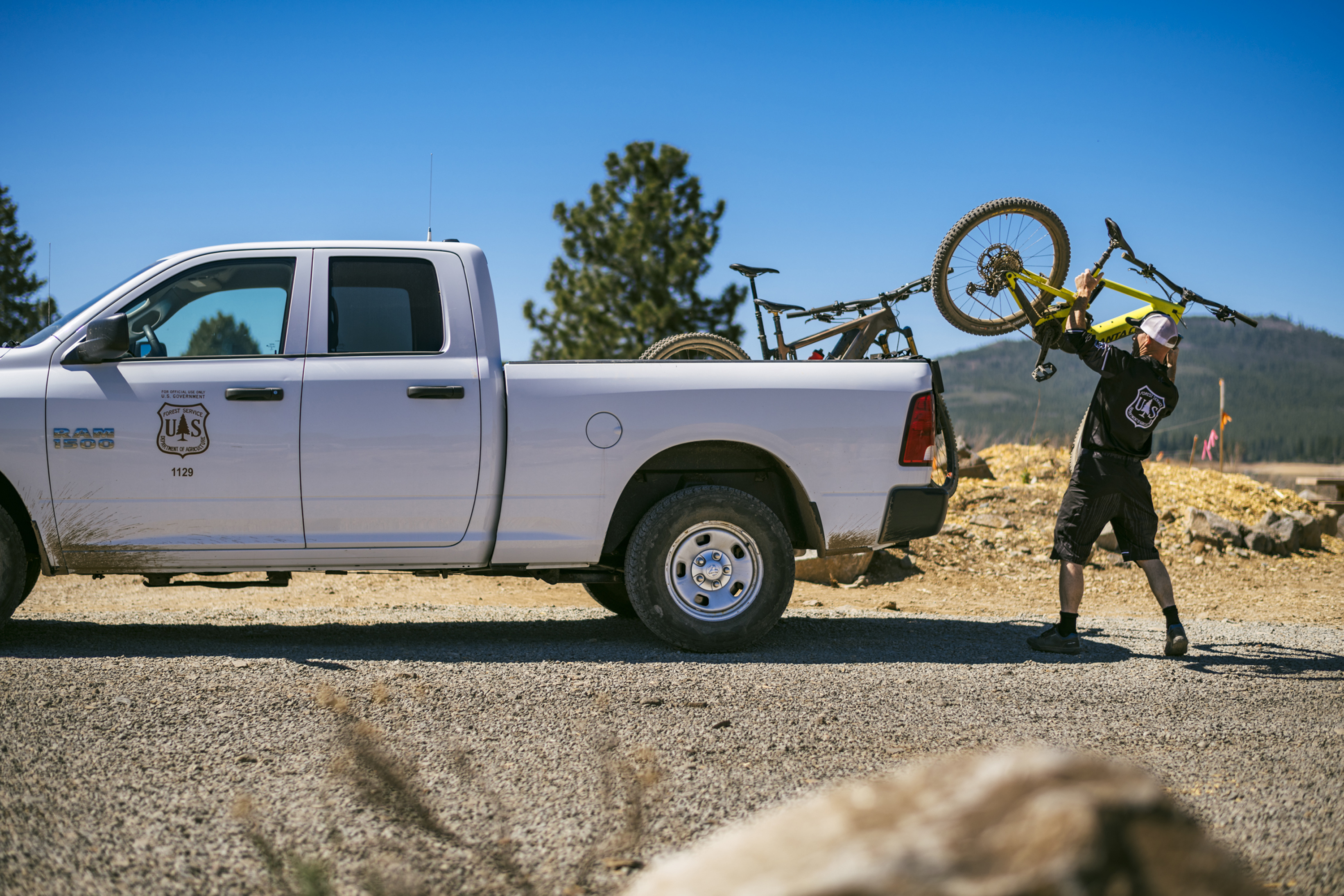
“Everyone from the supervisor to our archaeologist is on the same page when it comes to recreation,” Groom said. “Just as logging extracts trees from the forest, trail users extract an experience, from recreation, on the forest. It’s our job to manage this experience responsibly. It’s rare when you have an entire staff who all want to achieve the same goal. We are very fortunate, but we also know that this team won’t be in place forever.”
This dream team has only come together within the last three years. Groom is hoping the crew can maintain the pro-recreation culture they’ve fostered within the district, setting a precedent for any future employees to engage with the public and prioritize recreation.
Before the completion of Big Chief, there hadn’t been a new trail constructed in the Truckee Ranger District in more than a decade, since working with the district was challenging for members of the local trails community.
“Back in 2015 we had a meeting scheduled with the district at their office in Truckee,” said Matt Chappell, avid mountain biker, local trails advocate and founder of Truckee Dirt Union. “We sat in a lobby waiting patiently. Nobody came out to greet us when the time came and went. We left without talking to anyone. It was frustrating. Getting time to speak with the Forest Service was considered as difficult as finding a unicorn in the woods. We’re grateful for the current collaborative team and the recent strides towards progress.”


The older Forest Service approach of not proactively engaging with the public led to an explosion of user-created trails all over Truckee. The region quickly became known as a destination for some of the best underground mountain bike trails in Northern California.
“Truckee is a small community, and word spreads pretty fast,” Groom said. “Before long, I knew all the community’s trail builders by name and even by style, because I had ridden all these trails on my mountain bike.”
Instead of taking a heavy hand and shutting down the unsanctioned trails, Groom took the opposite approach. He reached out to community members like Chappell and set up in-person meetings. A few of these builders took some convincing before sitting down with Groom, but when he reassured them he wanted to adopt the trails, they came to the table.
“Our biggest problem with unsanctioned trails is that many of them go through sensitive habitats and archaeological sites,” Groom said. “We realize this isn’t done on purpose, but it has to be remedied by rerouting the trail.”

A primary example of adopting unsanctioned trails can be found on Jackass Ridge, just south and west of the junction of River Street and Highway 89. For years, Jackass Ridge has been a staple of Truckee locals because of its easy access from town, early snow melt-out in spring and fun rock featured jumps, tabletops and berms. It didn’t take long for the parking lot to overflow with cars sporting bike racks.
“We met with community members, and through Truckee Dirt Union and Truckee Trails Foundation, we came to an agreement, with the Forest Service adopting the trails,” Groom said. “With the help of Truckee Dirt Union, we provided direction, resources and support for the original builders to create reroutes bypassing sensitive areas. Truckee Trails was instrumental in coordinating with the Town of Truckee for funding. Collaboration between nonprofits, our agency and local government is a win for everyone-builders get to work art and riders get to enjoy it while fulfilling our agency’s responsibilities to the land.”
Bringing community members out of the shadows and into the light is something only an officer like Groom can do as a core trail user and mountain biker who’s engaged in the local trails community. His goal is not to shut down unsanctioned trails in areas like Martis and the Yogi Bear network–he wants to find ways to bring them into the fold, so they can be protected forever.
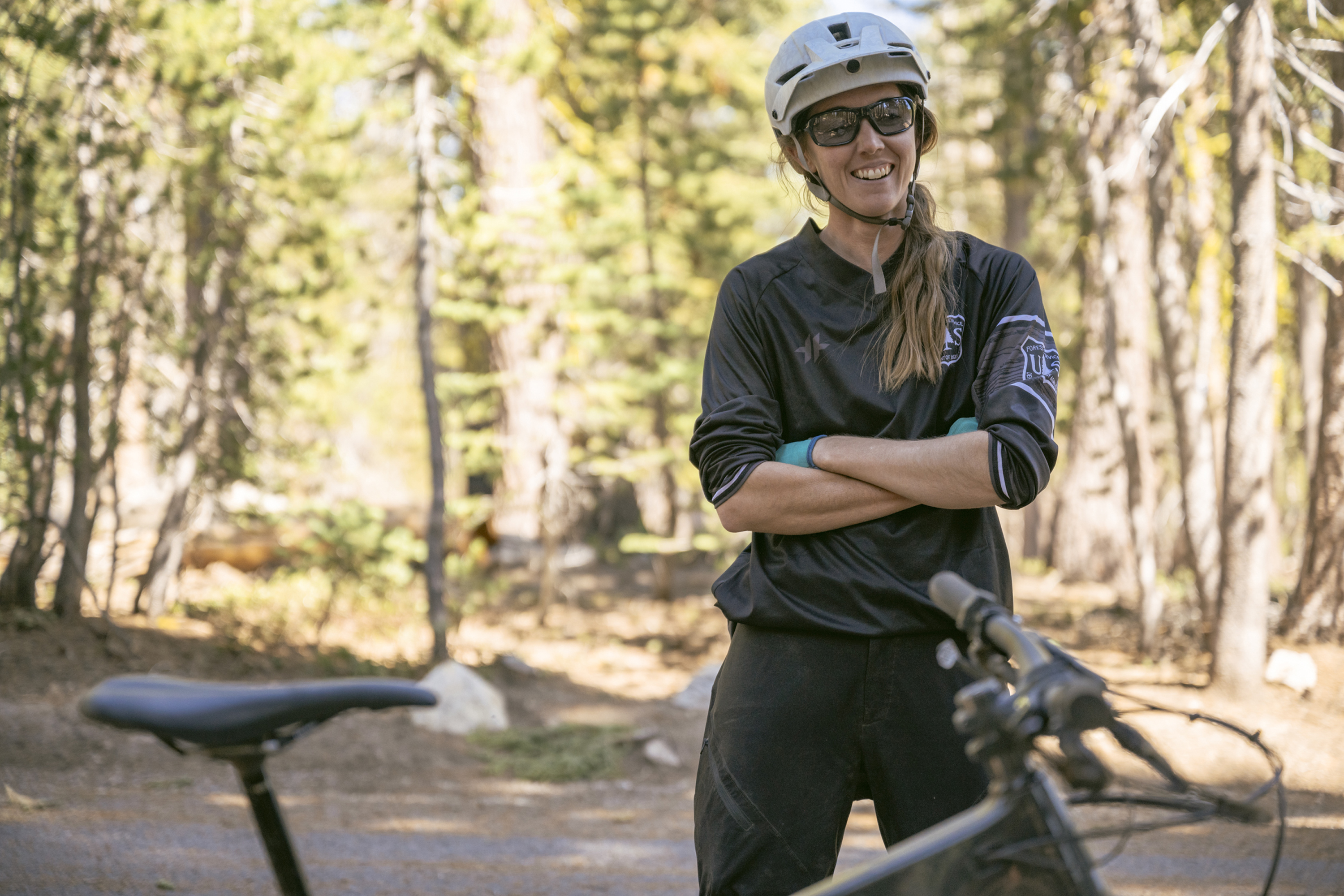
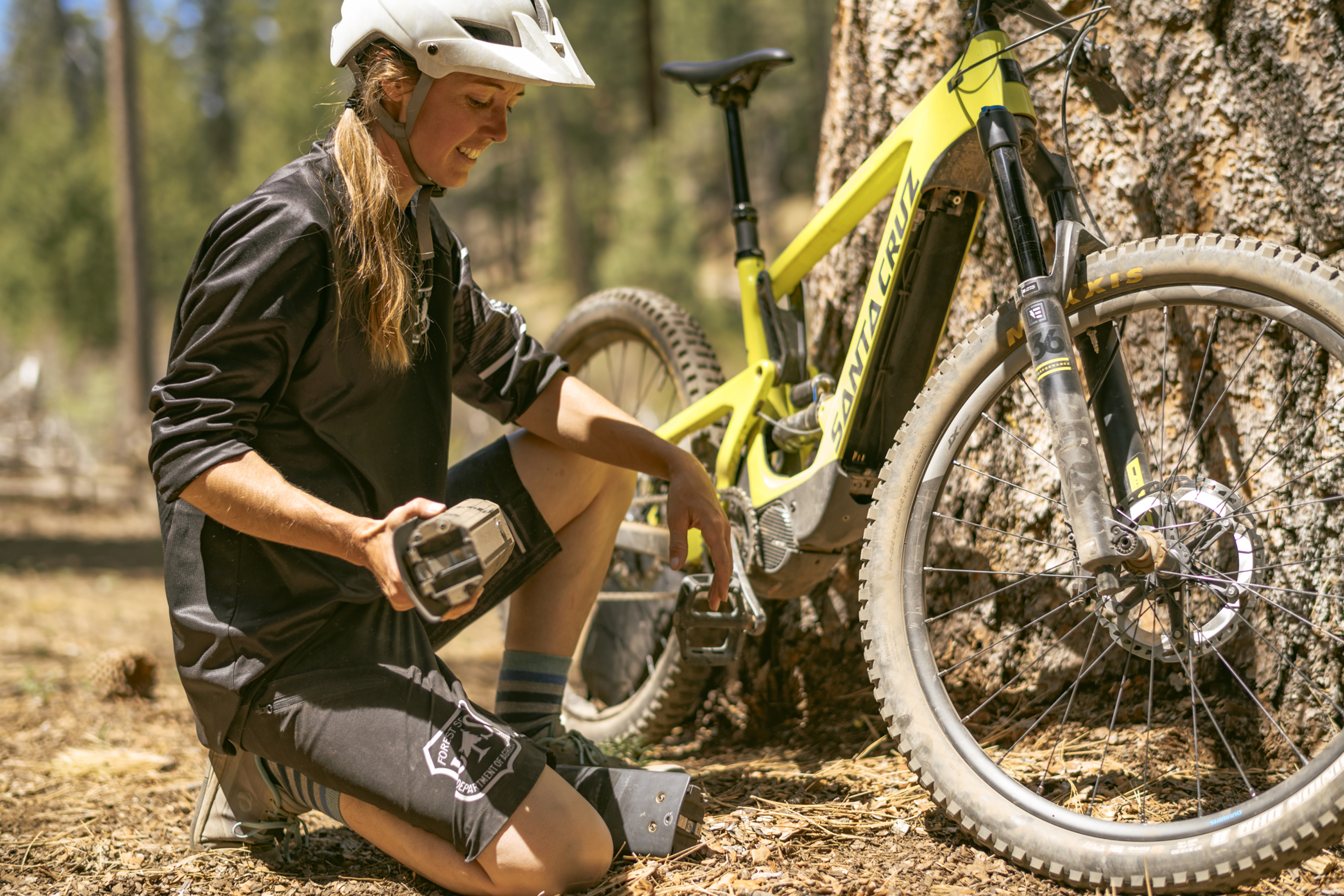
“These trails are a huge asset to the community,” Groom said. “Losing them would be a big blow to Truckee, not just recreationally, but also economically and as a sense of identity. A lot of folks visit Truckee to ride the trails. Whether they realize it or not, local builders have created a tourism economy in this town and we want to celebrate them, but we need to do it the right way.”
Doing it the right way is almost never the easy way. But Groom’s early days of breaking rocks in the hot New Mexico sun taught him there’s several ways to do the tough jobs. Instead of stubbornly hammering on the surface ignoring what lies beneath, dig down to the bottom and fully understand the rock before taking the first swing. Sometimes the rock doesn’t need to be broken at all–it can just be rolled off to the side intact, making an awesome trail feature for all users to enjoy.
John Groom welcomes inquiries from regional non-profit trails organizations looking to form more productive relationships with their local Forest Service districts. Contact him at john.groom@usda.gov.
